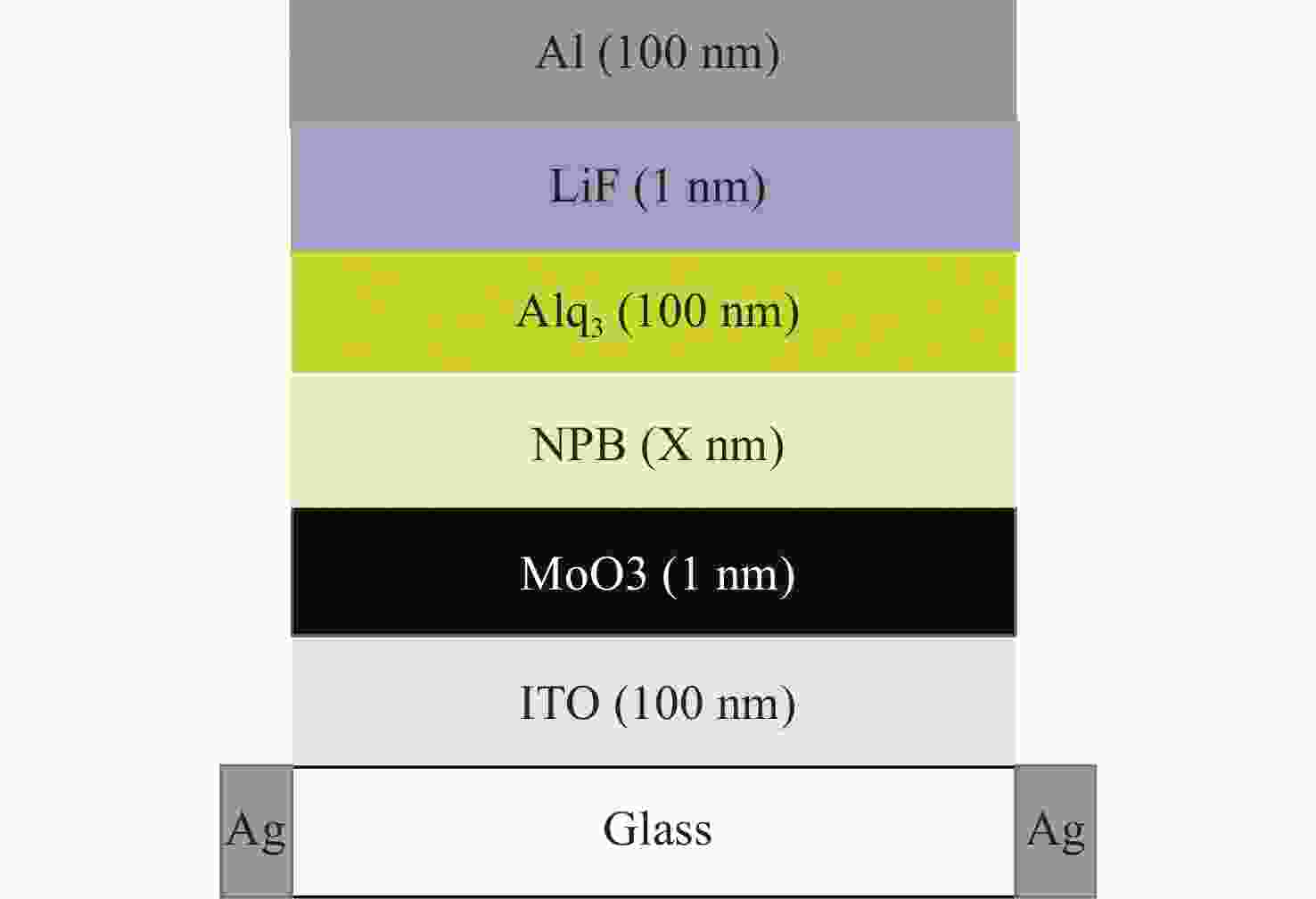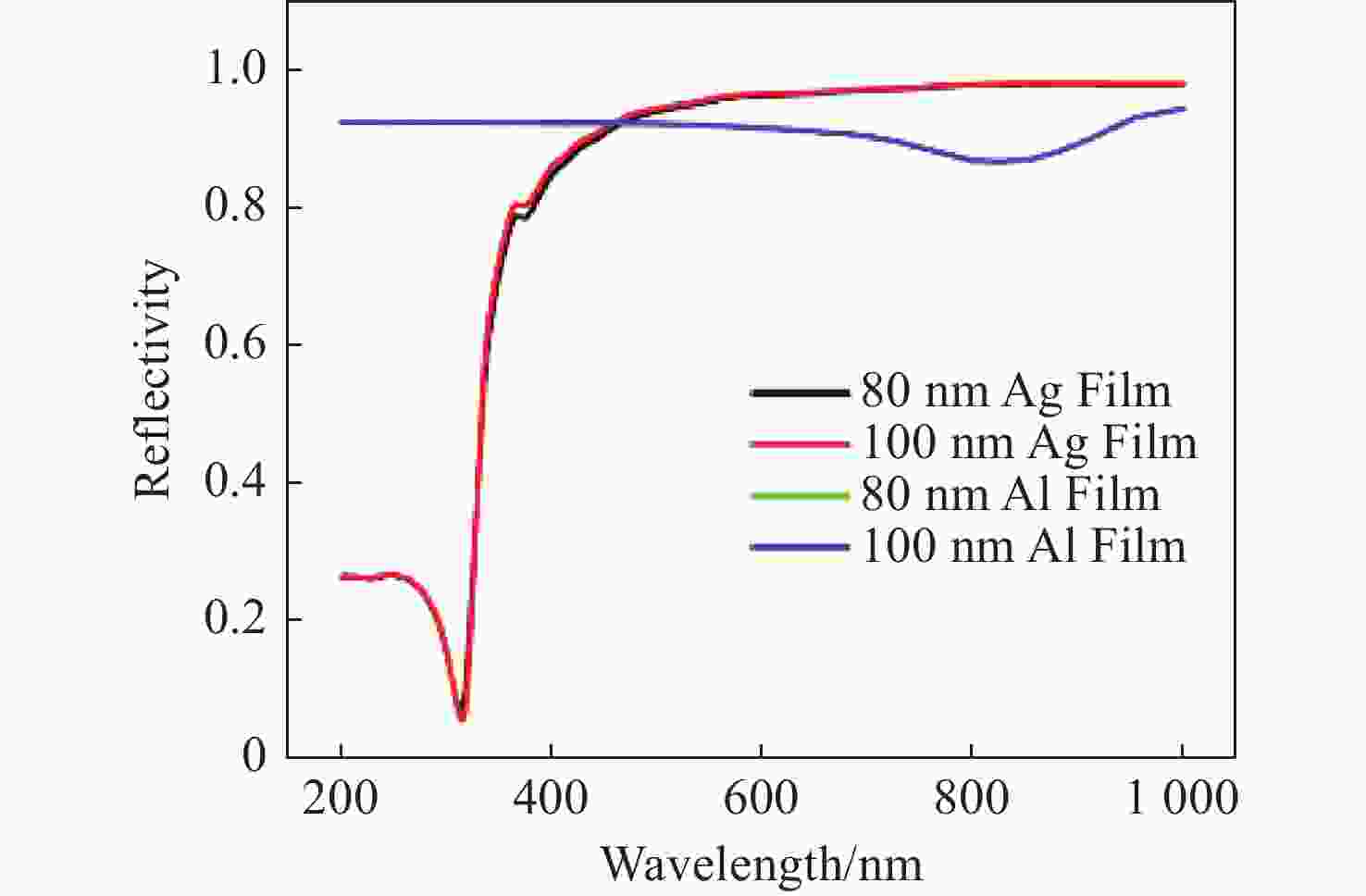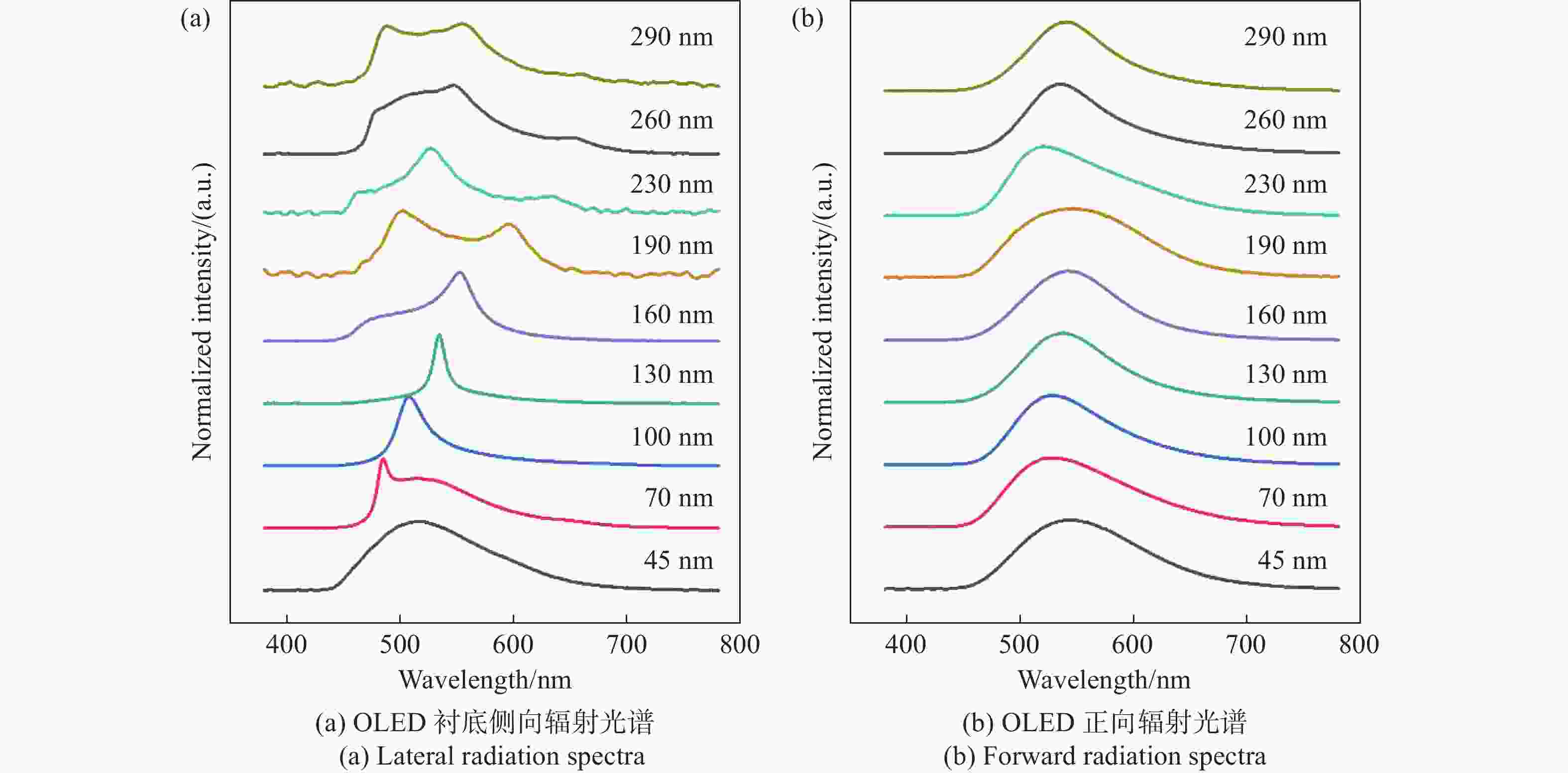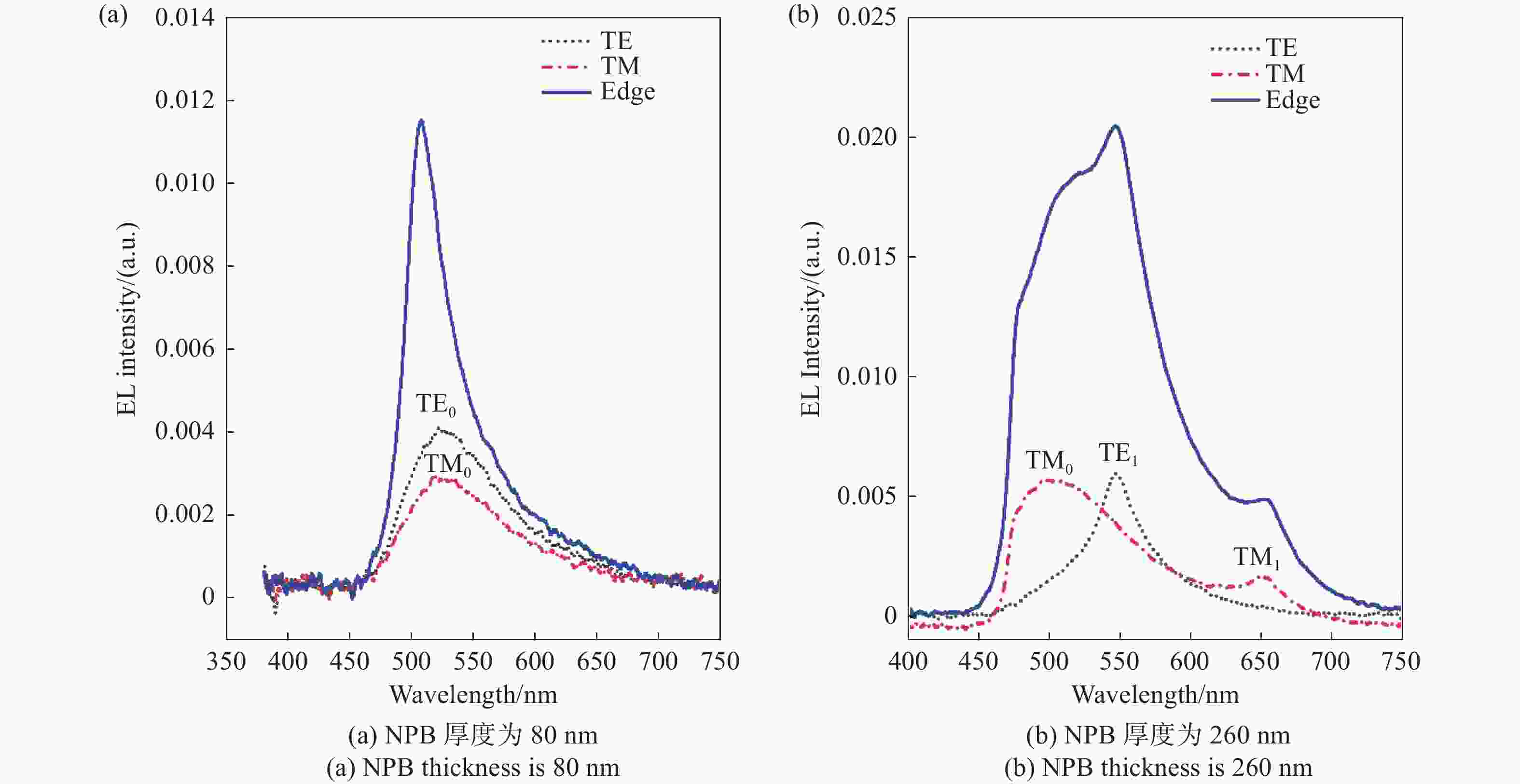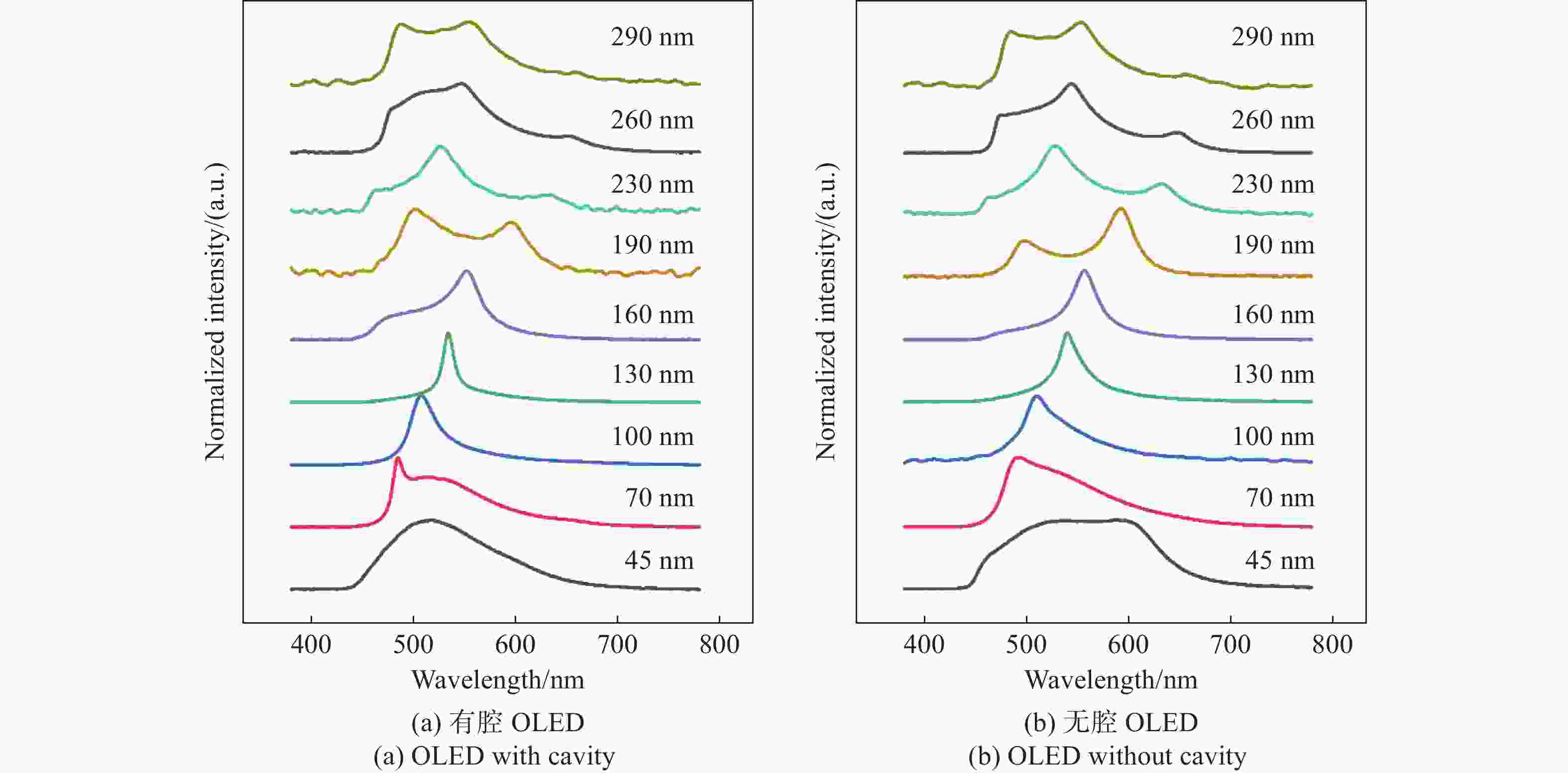Lateral radiation of the substrate of electrically pumped organic light-emitting diodes
-
摘要:
有机发光二极管衬底侧向辐射光谱与正向辐射光谱相比,存在明显的窄化现象。研究影响器件侧向辐射光谱窄化的因素,进一步减小辐射光谱的线宽,可为电泵浦有机发光二极管激光辐射研究打下基础。本文研究了随有机发光二极管空穴传输层 NPB 厚度的变化,器件衬底侧向辐射光谱的半高宽、峰位以及偏振特性的变化情况。比较了有机发光二极管衬底边缘两侧蒸镀银膜与未蒸镀银膜时的衬底侧向辐射光谱。研究发现蒸镀银膜时有机发光二极管的衬底侧向辐射光谱半高宽变窄,并且当空穴传输层 NPB 的厚度为 130 nm 时,器件衬底侧向辐射光谱半高宽低至 14 nm。说明器件衬底两侧存在银膜作为反射镜的情况下,衬底中侧向传播的光将受到光学谐振腔的作用。本文的研究结果为有机发光二极管辐射光谱的窄化和辐射光放大提供了一种新思路。
Abstract:There is a significant narrowing of the lateral radiation spectrum of the substrate of organic light-emitting diodes as compared to the forward radiation spectrum. Studying the factors that affect the lateral radiation spectrum narrowing of the device and further reducing the spectral linewidth can provide a foundation for the study of the electrically pumped organic light-emitting diode laser radiation. We study the full width at half maximum, peak wavelength, and polarization characteristics of lateral radiation spectrum in organic light-emitting diode substrate, with the thickness changes of hole transport layer NPB. The lateral radiation spectra of organic light-emitting diode with Ag film evaporated on both sides of the substrate edge are compared with those of organic light-emitting diode without Ag film. The full width at half maximum of the lateral radiation spectrum with Ag film is narrower. When the NPB thickness is 130 nm, the full width at half maximum of the lateral radiation spectrum in the device substrate reaches its narrowest, which is 14 nm. This shows that the optical resonator will affect the light propagating laterally in an organic light-emitting diode substrate when mirrors are provided on both edge sides of the substrate. The results indicate new approaches to narrowing the radiation spectrum and amplifying the light of organic light-emitting diodes.
-
-
[1] GRAUPNER W, LEISING G, LANZANI G, et al. Femtosecond relaxation of photoexcitations in a poly(para-phenylene)-type ladder polymer[J]. Physical Review Letters, 1996, 76(5): 847-850. doi: 10.1103/PhysRevLett.76.847 [2] HIDE F, SCHWARTZ B J, DÍAZ-GARCÍA M A, et al. Laser emission from solutions and films containing semiconducting polymer and titanium dioxide nanocrystals[J]. Chemical Physics Letters, 1996, 256(4-5): 424-430. doi: 10.1016/0009-2614(96)00450-2 [3] TESSLER N. Lasers based on semiconducting organic materials[J]. Advanced Materials, 1999, 11(5): 363-370. doi: 10.1002/(SICI)1521-4095(199903)11:5<363::AID-ADMA363>3.0.CO;2-Y [4] DÍAZ-GARCÍA M A, HIDE F, SCHWARTZ B J, et al. Plastic lasers: semiconducting polymers as a new class of solid-state laser materials[J]. Synthetic Metals, 1997, 84(1-3): 455-462. doi: 10.1016/S0379-6779(97)80829-6 [5] ICHIKAWA M, NAKAMURA K, INOUE M, et al. Photopumped laser oscillation and charge-injected luminescence from organic semiconductor single crystals of a thiophene/phenylene co-oligomer[J]. Applied Physics Letters, 2005, 87(22): 221113. doi: 10.1063/1.2138361 [6] LAWRENCE J R, TURNBULL G A, SAMUEL I D W, et al. Optical amplification in a first-generation dendritic organic semiconductor[J]. Optics Letters, 2004, 29(8): 869-871. doi: 10.1364/OL.29.000869 [7] MCGEHEE M D, GUPTA R, VEENSTRA S, et al. Amplified spontaneous emission from photopumped films of a conjugated polymer[J]. Physical Review B, 1998, 58(11): 7035-7039. doi: 10.1103/PhysRevB.58.7035 [8] BECKER H, BURNS S E, FRIEND R H. Effect of metal films on the photoluminescence and electroluminescence of conjugated polymers[J]. Physical Review B, 1997, 56(4): 1893-1905. doi: 10.1103/PhysRevB.56.1893 [9] BURROWS P E, SHEN Z, BULOVIC V, et al. Relationship between electroluminescence and current transport in organic heterojunction light‐emitting devices[J]. Journal of Applied Physics, 1996, 79(10): 7991-8006. doi: 10.1063/1.362350 [10] NOWY S, KRUMMACHER B C, FRISCHEISEN J, et al. Light extraction and optical loss mechanisms in organic light-emitting diodes: Influence of the emitter quantum efficiency[J]. Journal of Applied Physics, 2008, 104(12): 123109. doi: 10.1063/1.3043800 [11] LIN J, HU Y SH, LV Y, et al. Light gain amplification in microcavity organic semiconductor laser diodes under electrical pumping[J]. Science Bulletin, 2017, 62(24): 1637-1638. doi: 10.1016/j.scib.2017.12.010 [12] SEO J A, GONG M S, LEE J Y. High external quantum efficiency in yellow and white phosphorescent organic light-emitting diodes using an indoloacridinefluorene type host material[J]. Organic Electronics, 2014, 15(8): 1843-1848. doi: 10.1016/j.orgel.2014.05.017 [13] AHMAD V, SOBUS J, BENCHEIKH F, et al. High EQE and high brightness solution-processed TADF light-emitting transistors and OLEDs[J]. Advanced Optical Materials, 2020, 8(18): 2000554. doi: 10.1002/adom.202000554 [14] BALDO M A, O'BRIEN D F, YOU Y, et al. Highly efficient phosphorescent emission from organic electroluminescent devices[J]. Nature, 1998, 395(6698): 151-154. doi: 10.1038/25954 [15] HU Y SH, BENCHEIKH F, CHÉNAIS S, et al. High performance planar microcavity organic semiconductor lasers based on thermally evaporated top distributed Bragg reflector[J]. Applied Physics Letters, 2020, 117(15): 153301. doi: 10.1063/5.0016052 [16] MATSUSHIMA T, BENCHEIKH F, KOMINO T, et al. High performance from extraordinarily thick organic light-emitting diodes[J]. Nature, 2019, 572(7770): 502-506. doi: 10.1038/s41586-019-1435-5 [17] SLOWIK I, FISCHER A, FRÖB H, et al. Novel organic light-emitting diode design for future lasing applications[J]. Organic Electronics, 2017, 48: 132-137. doi: 10.1016/j.orgel.2017.05.048 [18] RAN G Z, JIANG D F, KAN Q, et al. Experimental observation of polarized electroluminescence from edge-emission organic light emitting devices[J]. Applied Physics Letters, 2010, 97(23): 233304. doi: 10.1063/1.3525161 [19] TIAN Y, GAN ZH Q, ZHOU ZH Q, et al. Spectrally narrowed edge emission from organic light-emitting diodes[J]. Applied Physics Letters, 2007, 91(14): 143504. doi: 10.1063/1.2778358 [20] YOKOYAMA D, NAKANOTANI H, SETOGUCHI Y, et al. Spectrally narrow emission at cutoff wavelength from edge of electrically pumped organic light-emitting diodes[J]. Japanese Journal of Applied Physics, 2007, 46(9L): L826-L829. doi: 10.1143/JJAP.46.L826 [21] PAUCHARD M, VEHSE M, SWENSEN J, et al. Optical amplification of the cutoff mode in planar asymmetric polymer waveguides[J]. Applied Physics Letters, 2003, 83(22): 4488-4490. doi: 10.1063/1.1627477 [22] CHANG J F, HUANG Y S, CHEN P T, et al. Reduced threshold of optically pumped amplified spontaneous emission and narrow line-width electroluminescence at cutoff wavelength from bilayer organic waveguide devices[J]. Optics Express, 2015, 23(11): 14695-14706. doi: 10.1364/OE.23.014695 [23] RAN G Z, JIANG D F. Polarized electroluminescence from edge-emission organic light emitting devices[J]. Proceedings of SPIE, 2011, 7943: 794314. doi: 10.1117/12.874516 [24] BRÜTTING W, FRISCHEISEN J, SCHMIDT T D, et al. Device efficiency of organic light-emitting diodes: Progress by improved light outcoupling[J]. Physica Status Solidi (A), 2013, 210(1): 44-65. doi: 10.1002/pssa.201228320 [25] DEPPE D G, LEI C, LIN C C, et al. Spontaneous emission from planar microstructures[J]. Journal of Modern Optics, 1994, 41(2): 325-344. doi: 10.1080/09500349414550361 [26] GU G, SHEN Z L, BURROWS P E, et al. Transparent flexible organic light-emitting devices[J]. Advanced Materials, 1997, 9(9): 725-728. doi: 10.1002/adma.19970090910 [27] SHEN J L, CHANG J Y, LIU H C, et al. Nearly in-plane photoluminescence studies in asymmetric semiconductor microcavities[J]. Solid State Communications, 2000, 116(8): 431-435. doi: 10.1016/S0038-1098(00)00356-2 [28] BULOVIĆ V, KHALFIN V B, GU G, et al. Weak microcavity effects in organic light-emitting devices[J]. Physical Review B, 1998, 58(7): 3730-3740. doi: 10.1103/PhysRevB.58.3730 [29] LIN CH L, CHANG H C, TIEN K C, et al. Influences of resonant wavelengths on performances of microcavity organic light-emitting devices[J]. Applied Physics Letters, 2007, 90(7): 071111. doi: 10.1063/1.2472541 -





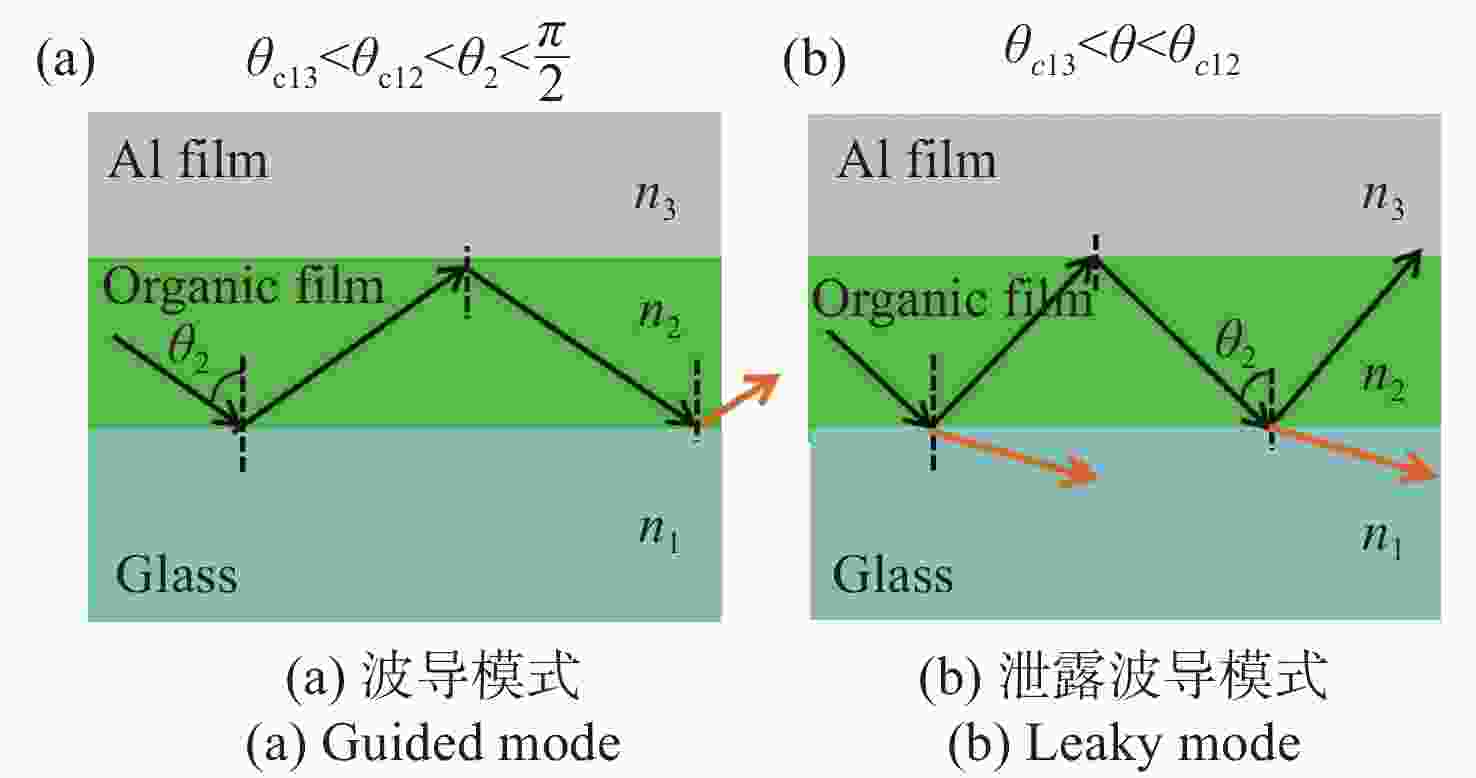
 下载:
下载:
